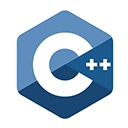C++ is a preferred language for robotics development due to its performance, low-level control, and real-time capabilities. It allows developers to interact with sensors, actuators, and control systems effectively. In this guide, we'll introduce you to the use of C++ in robotics and provide a simple code example for controlling a robotic arm.
1. C++ in Robotics
Robotics involves the development of autonomous or semi-autonomous machines capable of performing tasks in various environments. C++ is well-suited for robotics due to the following reasons:
- Performance: C++ offers the necessary performance for real-time control and data processing in robotics applications.
- Low-Level Control: C++ allows low-level hardware control and real-time communication with sensors and actuators.
- Robotic Libraries: Various C++ libraries and frameworks are available for robotics, such as ROS (Robot Operating System).
2. Sample Code: Controlling a Robotic Arm in C++
Let's demonstrate a basic example of controlling a robotic arm using C++. In this example, we'll use simple pseudocode to illustrate the concept:
#include <iostream>
#include <robot_arm_library> // Example library for robotic arm control
int main() {
// Initialize the robotic arm
RobotArm arm;
// Move the arm to a specific position
arm.moveTo(45, 30, 60); // Angles in degrees
// Perform a grasp action
arm.graspObject();
// Move to another position
arm.moveTo(60, 45, 30);
// Release the object
arm.releaseObject();
return 0;
}
In practice, the code for controlling a robotic arm would depend on the hardware and libraries used. Real robotic applications typically involve more complex algorithms and sensor feedback for tasks like path planning, obstacle avoidance, and more.
3. Conclusion
C++ plays a significant role in robotics development, enabling precise control and high-performance tasks. The provided example is a simplified introduction to the concept of controlling a robotic arm. Real-world robotic applications involve advanced control algorithms and integration with various sensors and actuators.

